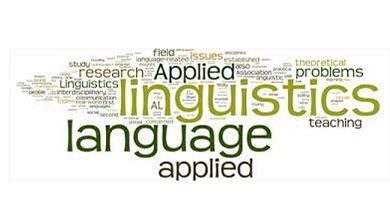Recreational reading characteristics and importance with examples
Recreational reading
The recreational reading is the kind of reading that is done with the sole purpose of enjoyment or entertainment. In general, this type of activity allows readers to experience different worlds in their imagination. Among its particularities, the fact that it is a creative , active and interactive process stands out.
This activity covers a wide range of genres and publications, between fiction and non-fiction. Similarly, there are no exclusive themes for recreational reading. For example, gardening or cooking books are usually read to gather information, but can also be simply read for pleasure.
On the other hand, reading for recreation is no longer restricted to print media. Currently, there is the possibility of reading online, either on a website, or through an electronic reader. Through them you can have access to endless recreational texts. They include, but are not limited to, novels, short stories, jokes, poetry, and plays.
Recreational reading has many benefits; tends to increase sense of accomplishment, confidence, self-esteem, and self- awareness. In addition, it helps promote inclusion and empathy . Also, reading for recreational purposes prevents boredom and promotes relaxation.
Characteristics
Recreational reading is also known as independent or leisure reading. Although it is an act of one’s own free will, it can begin at the request of another person. However, it is continued out of personal interest and for the sole purpose of obtaining satisfaction from the act of reading.
On the other hand, it is closely linked to the education and training process of the most advanced countries and is used as a complement to reading for academic purposes. It begins in a formal and systematic way from the initial grades with simple readings and attractive topics to attract the attention of students.
Once the habit is instilled, recreational reading helps to strengthen other positive attitudes that will help to take advantage of academic texts. These include reading and writing skills, text comprehension, and wide vocabulary.
However, it is advisable to begin the recreational reading process in the early years, before starting school. Surrounding children with a reading climate is very beneficial. This includes surrounding them with books, sitting with them at set times, and beginning readings even before they learn to read.
Importance
Research has shown that recreational readers are more likely to become better and more motivated readers of all types of text. On the other hand, those who read only for learning or to search for information, enjoy little of the texts they read.
In addition, through this activity, the reader can relate to authors, characters, other readers, and himself by exploring and rethinking identity. This is known as the social pleasure of recreational reading. Recreational reading characteristics importance
This pleasure develops readers’ ability to experience the world from other perspectives, and helps them understand and appreciate others who are far from them in time, space, and experience. Likewise, it helps to establish mechanisms to relate, correspond, attend and help other people different from themselves.
On the other hand, recreational or enjoyable reading, as it is also called, promotes cognitive progress and social possibility. In the same way, it stimulates knowledge and integrity. Finally, in a broader sense, it favors human coexistence.
Examples
1-Stories
The story is one of the recreational readings par excellence. It is a short fictional narrative with few characters and a simple plot. A large part of the stories are aimed at children’s readers. However, others can be found for older readers.
Apart from its short duration, the story makes intensive use of the use of metaphor , especially those aimed at younger people. With this, the storytellers try to keep the use of vocabulary within the limits of the readers’ ability. Similarly, it has no chapters, parts, or sections.
2-Novels
The name novel comes from Italian and translates news. It is a prose work that narrates totally or partially fictitious actions. In this type of recreational reading, interesting and entertaining events are narrated. They are divided into short and long, despite the fact that there is no clear delineation of length between the two.
Its main characteristic, and the feature that distinguishes it from the story, is its greater length. Similarly, it has a more complicated plot and has more characters. Also, descriptions of sites and situations are more elaborate.
Among the famous European novels can be mentioned The Three Musketeers (1844, Alexandre Dumas) Christmas Carol (1843, Charles Dickens) and Pride and Prejudice (1813, Jane Austen ). Meanwhile, on the South American side, María (1867, Jorge Isaacs), One Hundred Years of Solitude ( 1967 , Gabriel García Márquez) and Doña Bárbara (1929, Rómulo Gallegos) stand out.
3-Fables
The fables belong to the group of short recreational reading. In them, the characters are mostly animals or objects with human characteristics such as speech and movement. These pursue a didactic objective. At the end of all of them, there is a moral that contains the teaching.
Now, the best known fables in the world are those of Aesop, an ancient Greek slave, at the end of the 6th century BC. These number 725 in all, and are essentially allegorical myths that often portray animals that represent human beings.
These animals participate in human-like situations (a belief known as animism).
4-Legends
The legends are written or oral histories that can be both verse and prose. Its name comes from the Latin legenda that translates “what should be read.” These always introduce imaginative elements that enlarge the image of the situation or the character.
In their beginnings, they were transmitted by oral tradition and had a moralizing or spiritual intention. Later, many of these stories were compiled and converted to written code.
Then, as the years passed, the initial objective of the legends deviated from its initial orientation. It then became a fictitious story that tells unlikely events. In some cases it was baptized as popular legends or urban legends .


